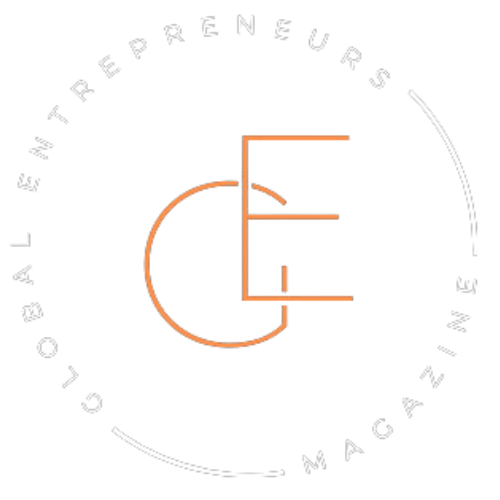Opening scene: The entrepreneur who saw something no one else did
He was laughed out of the room.
Not politely dismissed. Not humored. Laughed at—by a panel of investors who couldn’t imagine why anyone would want to print meat in a lab or teach a robot to walk like a toddler. They nodded, smiled, and moved on to the next pitch.
Years later, that same founder’s startup became the cornerstone of a new food industry. What was once “too weird” became obvious. The same people who laughed now call it inevitable.
This is the kind of pattern we rarely talk about in business circles. The ones who see further than the rest—who feel like time travelers stuck in the present—are often the ones building companies that don’t quite fit the usual mold. They’re not in it for quarterly wins. They’re not obsessed with exit strategies. They’re chasing something bigger than market share.
You’ve probably seen them. Maybe you are one. The founder whose pitch sounds like science fiction. The builder with notes scrawled on napkins about problems no one else thinks we have. The dreamer who gets told to tone it down. Be realistic. Go after something more… fundable.
But what if these are the voices we need most?
What makes a futurist entrepreneur?
They don’t build for what’s trending. They build for what’s coming.
That’s the difference. Futurist entrepreneurs don’t react to the world—they wrestle with it. They look at the way things are, compare it with the way things could be, and decide to start digging the tunnel in between.
These are the kinds of people who sit with questions no one’s asking yet. What happens when education doesn’t need classrooms? What if mental health care could be delivered through wearable tech? What does identity mean when we’re living half our lives in digital spaces?
And they don’t wait for permission to explore those questions.
Sometimes their ideas sound strange. They often are. But there’s a kind of quiet conviction that keeps them moving. They’re not obsessed with being first. They’re obsessed with building something that might just make the future more livable, more ethical, more sustainable—even if it takes ten years to get there.
The irony? These visionaries are usually seen as late to the current market. Investors pass. Users don’t get it. Journalists write them off. But when the world finally catches up, their work becomes the blueprint.
Futurist entrepreneurs aren’t defined by industry. You’ll find them in tech, yes—but also in agriculture, education, art, and biotech. What ties them together isn’t the product. It’s the pattern: they think in decades, not quarters. And they’re not afraid to be misunderstood for a while.
When the mission outweighs the market
In 2022, Yvon Chouinard gave Patagonia away. Not sold it. Not handed it off to a holding company. He transferred ownership to a trust and nonprofit so that every dollar not reinvested into the company would go directly to fighting the climate crisis.
Most people in business circles called it radical. He just called it common sense.
That’s what it looks like when the mission takes over. When the company becomes a vessel instead of the point. And it’s not just Patagonia.
There’s the social entrepreneur in Uganda who built a solar startup—not to chase scale, but because his village had lived in darkness for decades. There’s the founder in Oakland who kept her open-source AI tool free, even when three different VCs told her she could “monetize the hell out of it.”
These aren’t hobbyists. They’re deeply strategic. But their compass doesn’t point to profit alone. It points to repair. To change. To contribution.
The market matters, but it doesn’t lead. It follows.
Business becomes a vehicle—not the destination

Steve Jobs once said, “We’re here to put a dent in the universe.” That wasn’t branding. That was the blueprint.
For some entrepreneurs, the business itself isn’t the goal. It’s the medium. Like a brush in the hands of a painter. It gives form to the idea, but it’s not the idea.
There’s a founder in Berlin who built a micro-mobility platform, then handed off the CEO role as soon as the product gained traction—because her real focus was city redesign. Not scooters. Cities. She used the business to get the conversation started.
There’s another who’s been building modular housing systems for ten years. Every time his company gets close to a major contract, he pauses. Not because he’s unsure—but because he wants to keep the project community-owned. He says turning it into a unicorn would ruin it.
This kind of thinking confuses traditional investors. It doesn’t fit the spreadsheet. But it’s clear to the founder: the company is the tool. The idea is the purpose.
Some of them scale. Others stay small on purpose. But the thread is the same—they’re using business to carry something larger. A philosophy. A warning. A hope.
The tension: Vision vs. viability
One founder spent six years building an app to help incarcerated parents stay connected to their kids. She mapped the emotional trauma, the court restrictions, the literacy gaps. It worked. But almost no one funded it. “Not scalable,” they said. “Not exciting enough.”
It crushed her. Not because she needed approval, but because the mission deserved better.
This is the part no one glamorizes. The stretch between what should be built and what can be built, given the rules of capital and timing. Futurist entrepreneurs live in that stretch longer than most.
They get told they’re too early. Too idealistic. Too slow.
But sometimes they’re right. The market just isn’t ready. Or the tech hasn’t caught up. Or the public still laughs at the idea of lab-grown meat or virtual mental health clinics. So they wait. They tweak. They push through another round of rejection.
That kind of patience costs something. So does being misunderstood.
But it also clarifies things. When you’re not doing it for applause, you get real honest about why you’re doing it at all.
Why we need these kinds of entrepreneurs now
We’re surrounded by products. What we’re short on are possibilities.
So much of the startup world is stuck in short-term loops—optimize this, scale that, copy what’s working. But the world doesn’t need another photo-sharing app. It needs builders who are thinking beyond the current moment. Beyond convenience. Beyond profit.
There are ecosystems collapsing. Labor systems unraveling. Entire industries facing obsolescence. And still, somehow, the funding keeps flowing to safer bets.
This is why the futurist mindset matters. Because someone has to imagine a post-carbon economy and start mapping the path. Someone has to ask what justice looks like in a world run by algorithms. Someone has to risk building something the spreadsheet says doesn’t make sense—yet.
Entrepreneurs like that don’t chase the wave. They shape it.
They’re not making noise. They’re making room—for ideas, models, futures that don’t exist yet. And without them, we’re just recycling the past.
Closing story or reflection
There’s a woman in Bogotá who’s been prototyping 3D-printed homes made entirely from recycled plastic. She doesn’t have a unicorn valuation. She doesn’t do keynotes. But block by block, house by house, she’s rewriting what shelter means in a city that’s long been divided by wealth.
She doesn’t call herself a futurist. Most of them don’t.
They’re not chasing labels. They’re chasing possibilities. And they keep showing up—not because it’s glamorous, but because they can’t not. Because some visions are too heavy to carry alone. So they build the team. The product. The system. The business.
Not for the sake of business. For the sake of what might happen through it.
That’s what sets these entrepreneurs apart. Not just what they build—but what they believe people are capable of. And that belief, when it’s real, when it’s deep, when it survives the silence and setbacks—that’s the kind of belief that moves the future forward.




